Kicking conventional wisdom aside, bees' unique way of consuming oxygen is a fascinating blend of biology and chemistry.
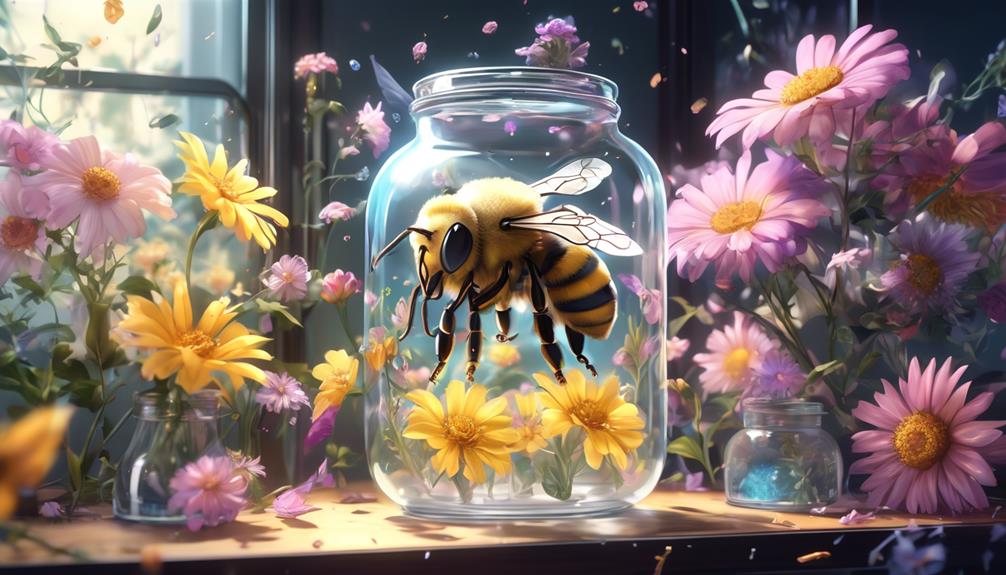
Do Bees Need Oxygen?
You might think, given their small size and different physiology, that bees don't require oxygen like humans do. However, the reality is more nuanced and intriguing.
In spite of their tiny size, bees, like all insects, do need oxygen to survive, but the way they consume and process it is dramatically different from our own respiratory process.
This unique method of oxygen consumption in bees not only sustains their life but also supports their strenuous activities like flying and collecting nectar.
As we further explore this topic, you'll find a fascinating blend of biology and chemistry that may challenge your understanding of life's most basic processes.
Key Takeaways
- Bees require oxygen for their survival and energy production.
- They have evolved a unique respiratory system with spiracles and tracheae for efficient gas exchange.
- Bees can regulate their oxygen intake by opening and closing their spiracles.
- Oxygen plays a crucial role in the growth, development, and overall health of bees.
Understanding Bee Physiology
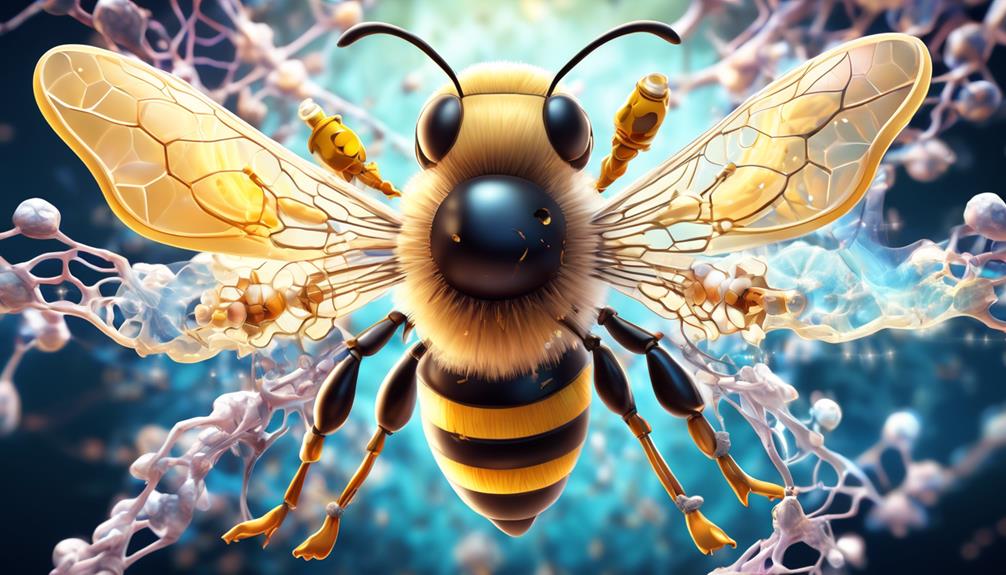
Diving into the realm of bee physiology, you'll find that, like most organisms, bees indeed require oxygen for their survival and energy production. It's essential to their metabolic process. They absorb it through their spiracles, small openings on their bodies, and it's then transported throughout their system via a complex network of tracheae and tracheoles.
Contrary to what you might think, bees don't have lungs like us. Instead, they've evolved a different, more efficient system for gas exchange. Oxygen enters the bee's body through a series of external openings known as spiracles. These spiracles lead to a network of tubes, or tracheae, which get smaller, eventually becoming microscopic tracheoles. This network penetrates deep into the bee's tissues, ensuring oxygen is delivered right where it's needed.
Furthermore, bees have an impressive ability to regulate their oxygen intake. They can open and close their spiracles, allowing them to adjust the amount of oxygen they absorb. This is crucial for their energy management and survival in different environments. So, in essence, bees not only need oxygen, they've developed a sophisticated system to manage its use effectively.
The Role of Oxygen in Insects

While bees provide a fascinating example of oxygen usage, it's important to understand that the role of oxygen in the animal kingdom extends far beyond them, significantly impacting the lives of all insects. Insects, like humans, require oxygen for survival. Oxygen plays a crucial role in insect respiration, a process that involves the breakdown of glucose to produce energy. This energy is vital for all their bodily functions, from movement to reproduction.
Insects have a unique respiratory system. Unlike humans who breathe through their mouths or noses, insects breathe through tiny tubes called tracheae. Oxygen enters through spiracles, small openings located along the insect's body, and diffuses through the tracheae to reach every cell. This system allows oxygen to be directly delivered to the tissues that need it, bypassing the need for a blood transport system.
However, an insect's oxygen intake isn't constant. It can vary depending on the insect's activity level, environmental conditions, and life stage. For instance, an active insect may require more oxygen than one at rest. Similarly, an insect may consume more oxygen in warmer conditions, as its metabolic rate increases. Understanding these oxygen dynamics is key to comprehending insect physiology and survival.
Breathing Mechanisms of Bees
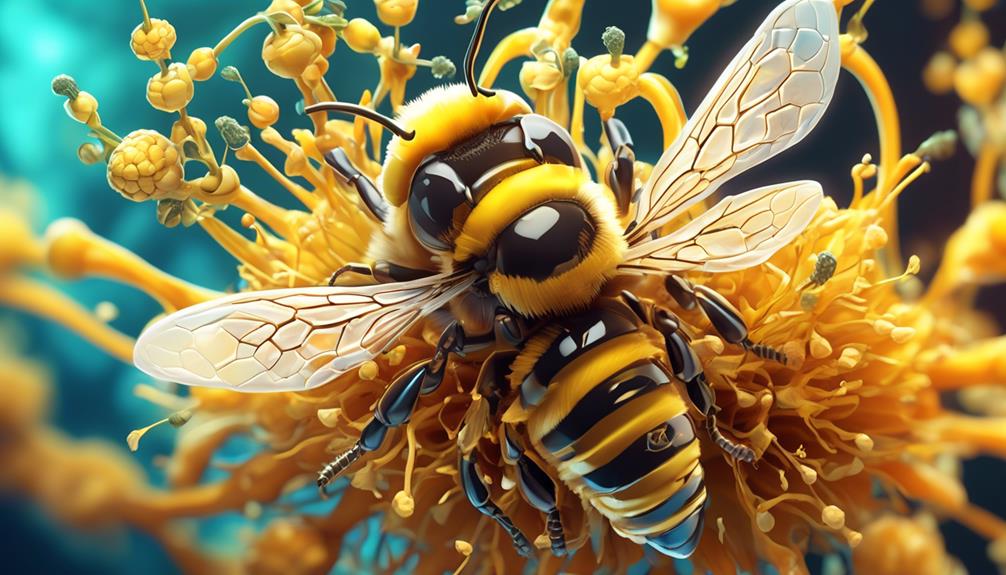
Now, let's delve into the specific breathing mechanisms of bees, an essential part of their physiology that enables them to survive and thrive in their environments.
Unlike humans, bees don't have lungs. Instead, they breathe through a complex network of tubes called tracheae and tiny holes in their bodies known as spiracles.
Here's how it works: Oxygen enters the bee's body through these spiracles, which are strategically located on both sides of its abdomen and thorax. The oxygen then travels through the tracheal system, reaching each cell individually. It's a direct and efficient system, ensuring that every cell gets the oxygen it needs promptly.
Interestingly, bees have the ability to control the opening and closing of their spiracles. This is crucial during times of intense activity, such as foraging or defending the hive, when oxygen demand increases. It also allows them to conserve oxygen when inactive.
Carbon dioxide, the waste product of respiration, exits the bee's body via the same route. But there's a twist: bees don't just passively release CO2. They actively push it out, using their body muscles to contract and expel the waste.
Adaptations to High Altitude

Despite their seemingly delicate structure, bees have remarkable adaptations that enable them to survive and function efficiently even at high altitudes where oxygen levels are significantly lower. They've evolved various physiological strategies to overcome hypoxic conditions, utilizing their ability to regulate their metabolic rate and the flexibility of their respiratory system.
Here is a table presenting some of these adaptations:
Adaptation | Description |
|---|---|
Increased Metabolic Rate | Bees can increase their metabolic rates to generate more heat and energy, vital for survival in oxygen-starved conditions. |
Flexible Respiratory System | Bees' tracheal systems can expand or contract to adjust to varying oxygen levels. |
Efficient Oxygen Utilization | Bees have an innate ability to utilize oxygen efficiently, compensating for lower oxygen availability. |
These adaptations are not just fascinating but critical to their survival, enabling bees to colonize a wide range of habitats, from sea level to high mountains. You see, nature isn't just about survival of the fittest. It's also about survival of the most adaptable. And bees, with their remarkable high-altitude adaptations, are a testament to this evolutionary principle.
Oxygen and Bee Development
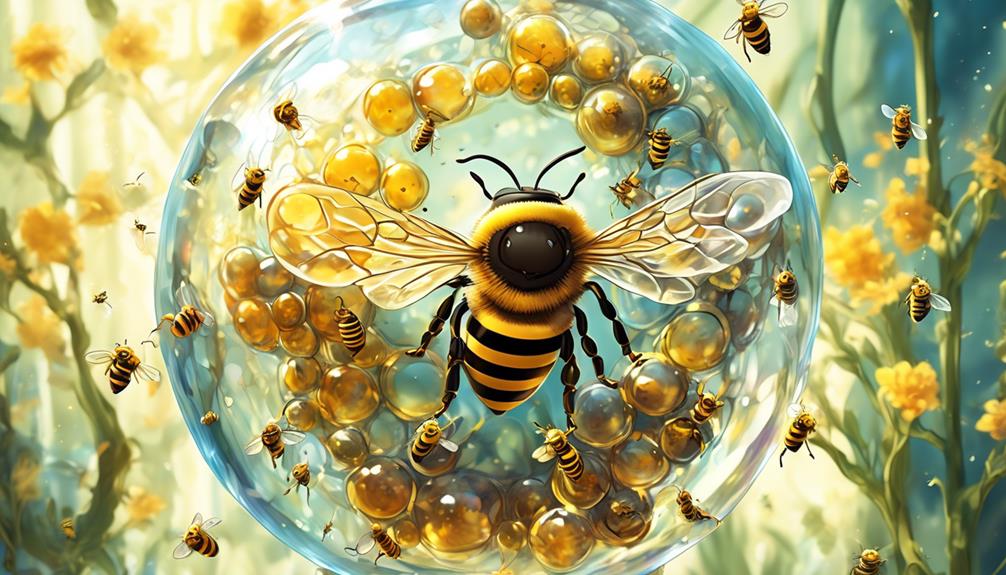
Building on the understanding of bees' unique physiological adaptations, let's explore how oxygen plays a crucial role in the development stages of these resilient insects.
Oxygen is integral to the energy metabolism of bees, directly affecting their growth and development.
In the egg stage, bees rely on oxygen diffusing through the eggshell. As the larvae grow, they increase their oxygen consumption, facilitating rapid cell division and tissue formation. If oxygen levels drop, it can stunt their growth or even cause their demise.
The pupal stage is especially oxygen-intensive. Here, the bee's body undergoes significant transformation, requiring a hefty dose of oxygen. Without enough oxygen, development can be hindered, leading to deformities or lethality.
In adult bees, oxygen fuels the high metabolic rates needed for flight and other activities. They've evolved a tracheal system, an intricate network of tubes, that efficiently delivers oxygen to tissues. Without this system, they wouldn't be able to meet their oxygen demands.
Impact of Oxygen Deprivation on Bees
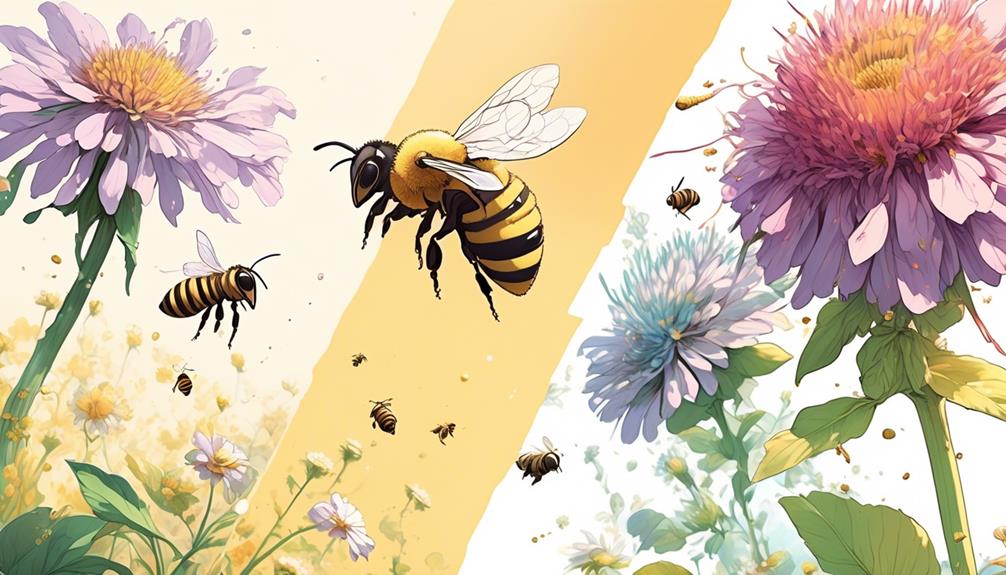
When bees experience oxygen deprivation, their survival and overall functionality are severely compromised, leading to detrimental effects on their growth, behavior, and lifespan. This can be due to various factors such as environmental pollutants, changes in atmospheric conditions, or exposure to certain chemicals.
Impact | Short-Term Effects | Long-Term Effects |
|---|---|---|
Growth | Stunted growth, delayed development | Impaired ability to reproduce, shortened lifespan |
Behavior | Erratic behavior, decreased ability to communicate with the hive | Loss of ability to perform essential tasks, hive collapse |
Lifespan | Immediate death in severe cases | Gradual weakening, leading to premature death |
These impacts are not just isolated to individual bees but can spell disaster for the entire hive. Oxygen deprivation disrupts the intricate balance within the bee community, leading to a breakdown in the roles and responsibilities that are key for the hive's survival.
Understanding these impacts is crucial for you, whether you're a beekeeper, entomologist, or environmentalist. By understanding the importance of oxygen for bees, you can take steps to minimize their exposure to oxygen-deprived environments and help ensure their survival and the continued health of our ecosystems.
Frequently Asked Questions
What Happens to Bees if They Are Exposed to Environments With Excessive Oxygen?
If bees are exposed to environments with excessive oxygen, they'd likely experience hyperoxia. This condition can damage cells and tissues, leading to problems like oxidative stress, inflammation, and even death.
Bees, like humans, require a balance of oxygen to survive. Too much oxygen disrupts this balance, causing potentially harmful effects.
It's crucial to maintain bee populations in balanced environments for their survival and the essential pollination work they perform.
Do Bees Require a Different Level of Oxygen Compared to Other Insects?
Yes, bees do require oxygen but not necessarily a different level than other insects. Like all insects, bees breathe through a complex system of tubes called tracheae, which delivers oxygen directly to their cells. The amount of oxygen required can vary based on the bee's activity level.
However, it's important to note that bees can't survive in oxygen-deprived environments just like you can't. So, they do need a certain level of oxygen to live.
How Do Bees React to Changes in Oxygen Levels in Their Hives?
Yes, bees do react to changes in oxygen levels in their hives. They're sensitive to their environment and alterations can impact their behavior and health.
When there's less oxygen, they may struggle to breathe and their activity levels can decrease. High oxygen levels, on the other hand, don't harm them but can encourage more activity.
It's crucial to maintain optimal oxygen levels for the wellbeing of the hive.
Can Bees Survive in Space Where There Is No Oxygen?
You're wondering if bees can survive in space, where there's no oxygen. The answer is no, they can't.
Like most organisms, bees require oxygen to breathe and survive. Space is a vacuum, devoid of oxygen, so a bee wouldn't be able to breathe or function.
Their delicate bodies would also succumb to the harsh, freezing temperatures and radiation.
Are There Any Species of Bees That Have Adapted to Live in Low-Oxygen Environments?
No, there aren't any known species of bees that have adapted to low-oxygen environments. Bees, like most insects, breathe through a complex system of tubes called tracheae, which delivers oxygen directly to their cells.
If oxygen levels are too low, they can't survive. Thus, bees typically live in environments with ample oxygen, such as forests and meadows.
Conclusion
So, yes, bees absolutely need oxygen. Their unique respiratory systems, designed for efficiency, filter in oxygen through spiracles. Their anatomy allows them to adapt even to high altitudes.
Oxygen is crucial for their growth and development too. But beware, oxygen deprivation can have dire consequences on these industrious creatures. Understanding this can help us protect bees and by extension, our ecosystem.
After all, their survival is intricately linked with ours.


